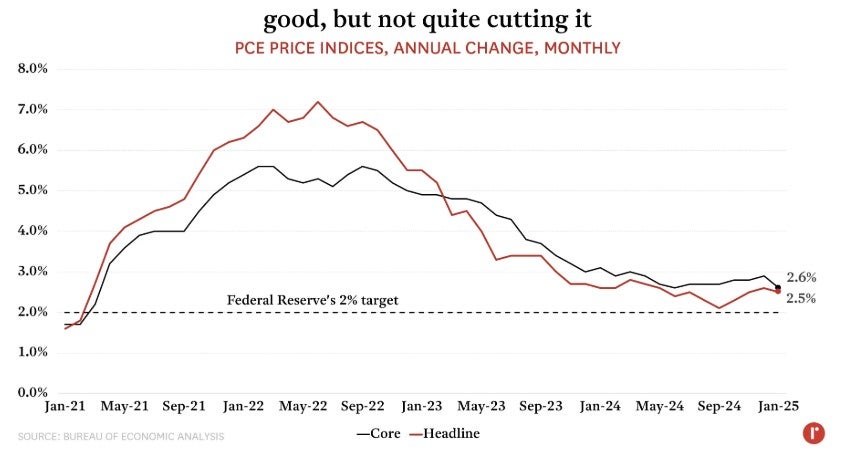
January's data matched consensus forecasts but did little to accelerate the path toward normalization. Core PCE, which excludes more volatile food and energy prices, reached its lowest level in seven months at 2.6%. Yet even with this improvement, inflation remains well above the Fed's 2% target, and the duration of this elevated inflation—now entering its fifth year—adds to concerns.
The latest FOMC meeting minutes reinforced a high bar for rate cuts Fed officials stated they “would want to see further progress on inflation before making additional adjustments” to the policy rate and that a “careful approach” is needed. The tone of the Fed has gradually grown more hawkish over the past few months. Per the CME Fedwatch Tool markets are now pricing in no rate cuts this year, down from December when the market expected roughly 50 basis points in cuts over 2025. January’s PCE data was positive, but it did not represent the level of progress the Fed has signaled it needs for further action.

Meanwhile, the Bureau of Economic Analysis’ latest report raised a red flag: between December and January, consumer spending fell at its fastest pace in nearly four years. While colder weather has played a role, consumers are also reducing spending and delaying major purchases in the face of mounting economic uncertainty.
Much of that uncertainty stems from trade wars that, after months of rhetoric, have rapidly escalated. A 25% tariff on all goods coming from Canada and Mexico and an additional 10% tariff on all goods from China came into effect on March 4th, with all three countries signaling retaliatory measures in response.

For our industry and the housing market generally, the new tariffs will significantly impact construction costs across the board. According to the National Association of Home Builders, softwood lumber imports from Canada, gypsum products (used in drywall) from Mexico, and steel and aluminum components essential for residential construction will be particularly affected.
As these trade tensions continue, they add another layer of complexity for the Federal Reserve's decision-making process. The Fed now faces both persistent inflation and potential supply-driven price increases, making the prospects for monetary easing in 2025 increasingly uncertain. For the sake of home affordability and your mortgage rate, let's hope this trade standoff proves short-lived.


